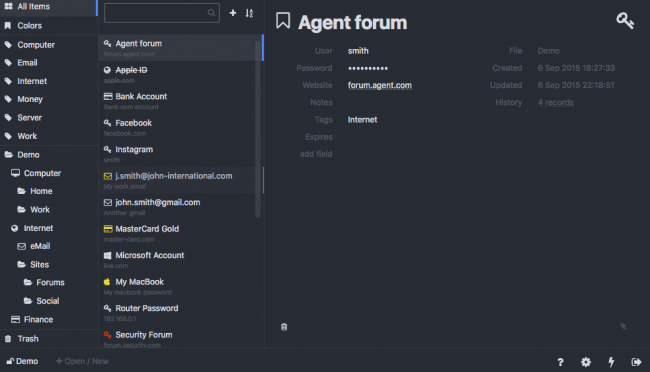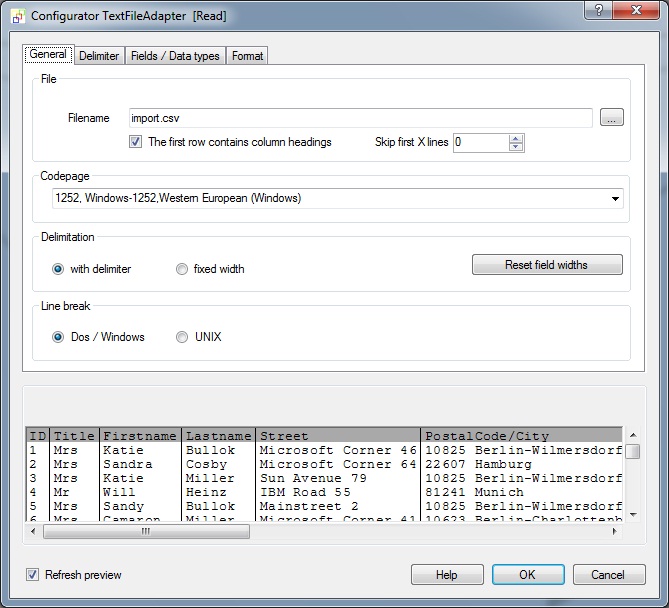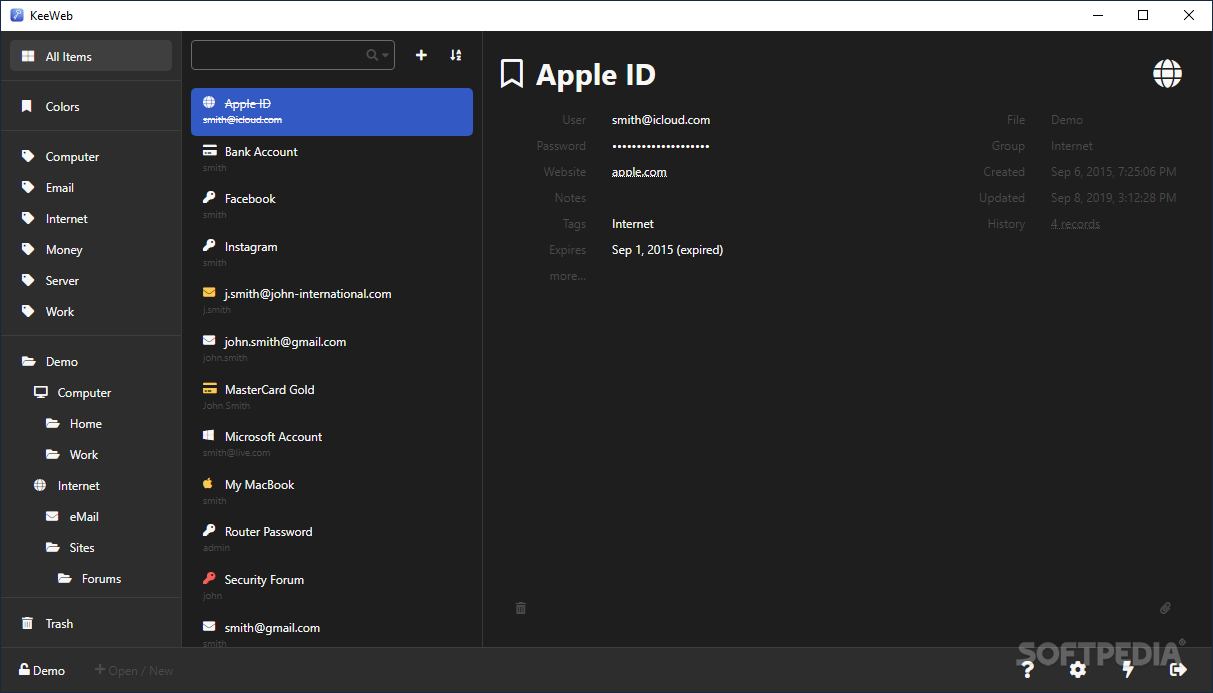

- Keeweb import csv install#
- Keeweb import csv password#
- Keeweb import csv free#
- Keeweb import csv crack#
The GUI offers a "1 second delay" option that calculates the number of rounds based on your current PC, but for an ODROID-C1 this is 78,000, while for an Intel it goes to the tens of millions.

The higher the number the harder it will be to brute-force, but also the longer it will take to open or save your database.
Keeweb import csv password#
This means how many times it should re-encrypt the master password in order to generate the actual key. "work stuff"), a default username, encryption algorithm, AES is set by default, and the number of transformation rounds. In the second step you will be asked for a name for the database (e.g. I'm going to use "odroid" just an example password 🙂įigure 1 - Database creation - use a strong password! For this article we're not going to use a key, only a Master Password, so make sure to use something difficult to guess, here's a suggestion. If you use a key, you can create it from the dialog box by moving the mouse around, or with dd, from /dev/random. Select a suitable name, I used ‘NewDatabase.kdbx’, and you will be asked to set a strong Master Password, and optionally a key to unlock the database. Once started, you will need to create a new database to store your passwords (File -> New…).
Keeweb import csv install#
You can install KeePass2 directly from apt on your ODROID device: NET, but because of unexpected support from Microsoft, Mono can run quite well on Linux systems, even armhf/arm64. KeePass is natively a Mono application, written in. There are lots of password managers out there, but I will focus on a well supported open source program called KeePass,, which has a backend for a lot of operating systems. So we need the computer's help to remember and generate all those passwords and we need one strong master password to protect them all. The only protection you have is frequent password changes and avoiding password reuse, so that a compromised account doesn't turn into a compromised identity.Īs you know, humans are notoriously bad at choosing and remembering lots of changing passwords, frequently used ones can be found here. The infamously long list can be found here. Recent disclosures have shown that even big companies like Yahoo, Apple, and LinkedIn have suffered from data breaches and have had their password data stolen.

Keeweb import csv crack#
However, you have no way of knowing how these sites secure their passwords, maybe they are stored in clear, or hashed without salt which makes them easy to crack with rainbow tables, or debugging messages expose passwords in server logs. Veracrypt doesn't exist for mobile platforms, BoxCryptor is expensive, OneDrive Vault can be accessed by MS.If you're like me, you've been on the Internet for over 20 years, and in all these years you kept making a capital sin: reusing the same passwords on different sites for convenience, as illustrated in the cartoon here. I'd pay, it's the only crossplatform program of its kind that I know of that's FOSS on most platforms, and it's well worth the little money they ask for for the mobile client.
Keeweb import csv free#
Alternatively, just create a record in KP called "Bitwarden backup" and attach the backup file to it.ĪFAIK Cryptomator is free on Windows, Mac, and Linux, it's only paid on iOS because it costs money to submit apps to AppStore. Then, either import your CSV into Keepass (so every BW record becomes a KP record - I did not use this yet so I don't know how well it works). The right way to do this is to first create a Keepass database, and assign a password to it. When you are trying to open your CSV, it assumes that it's a Keepass database (which can have any extension) and asks you for a password and / or keyfile (it can use both, or either). It can import all kinds of formats, or attach them to records, but it starts with an encrypted Keepass file.

Keepass expects a Keepass encrypted file. csv file and tried to open it in KeePass but it's asking me for a password and a ''Keyfile''?


 0 kommentar(er)
0 kommentar(er)
